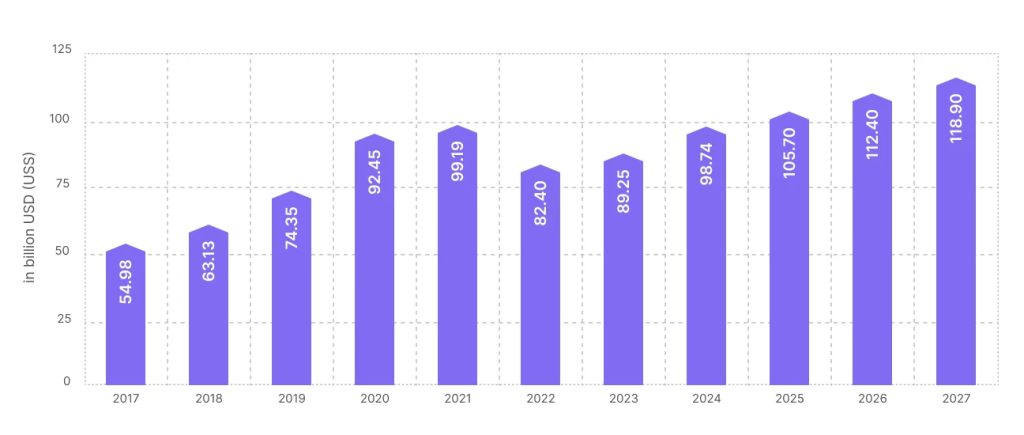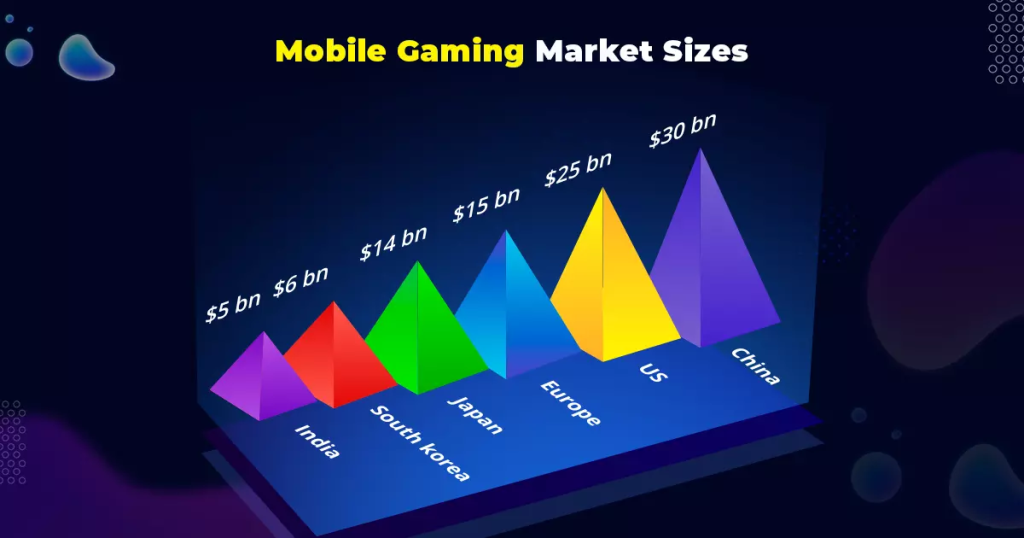In less than two decades, gaming has undergone a revolutionary transformation from an activity primarily enjoyed on specialized consoles and PCs to one that fits comfortably in billions of pockets worldwide. The rise of mobile gaming represents one of the most significant shifts in entertainment history, creating unprecedented access to interactive experiences and reshaping the entire gaming industry landscape. This explosive growth continues to accelerate, driven by technological advancements, changing consumer behaviors, and innovative business models.
The Staggering Numbers Behind Mobile Gaming’s Dominance
According to the latest mobile gaming statistics, the mobile gaming market now generates over $90 billion annually—more than console and PC gaming combined. This remarkable figure represents approximately 50% of the global gaming market revenue, a percentage that continues to increase year-over-year. Other key indicators of mobile gaming’s dominance include:
- Over 2.6 billion mobile gamers worldwide (approximately one-third of the global population)
- Average daily playing time exceeding 1 hour per mobile gamer
- Mobile game downloads surpassing 80 billion annually across all app stores
- User acquisition costs reaching new heights as competition intensifies
These figures reflect not just growth but a fundamental shift in how humanity engages with interactive entertainment. Where gaming once required significant financial investment in hardware and software, mobile platforms have democratized access on an unprecedented scale.
The Evolution of Mobile Gaming Capabilities
The rise of mobile gaming correlates directly with dramatic improvements in smartphone technology. Early mobile games like Snake and Tetris, while entertaining, offered limited graphical capabilities and gameplay depth. Today’s mobile devices deliver experiences that rival dedicated gaming systems from just a few years ago.
Technical Advancements Fueling Growth
- Powerful mobile GPUs capable of rendering complex 3D environments
- High-refresh-rate displays optimized for gaming (120Hz+)
- Dramatically increased RAM and storage capacities
- Advanced cooling systems to maintain performance during extended sessions
- 5G connectivity enabling lag-free multiplayer experiences
These technical improvements have enabled mobile versions of previously console-exclusive franchises like Call of Duty, PUBG, and Genshin Impact to thrive on smartphones and tablets.

Demographic Expansion: Gaming for Everyone
Perhaps the most significant aspect of the rise of mobile gaming is its unprecedented demographic reach. Unlike traditional gaming platforms that historically skewed toward younger male audiences, mobile gaming has achieved remarkable diversity:
- Gender distribution approaching parity (48% female players globally)
- Strong engagement across all age groups, including 55+ demographics
- Significant penetration in emerging markets where consoles remain unaffordable
- Cross-cultural appeal transcending regional entertainment preferences
This demographic breadth has fundamentally altered developer approaches, leading to greater diversity in game design, themes, and monetization models that accommodate various player preferences and economic circumstances.
Business Model Innovation: Free-to-Play Dominance
The freemium revolution represents another cornerstone of mobile gaming’s explosive growth. By removing upfront price barriers, developers dramatically expanded their potential audiences. According to mobile gaming statistics, free-to-play games now account for over 90% of mobile gaming revenue, generating income through:
- In-app purchases (character upgrades, cosmetic items, convenience features)
- Battle passes and subscription services
- Advertising (rewarded video, interstitials, banner ads)
- Brand sponsorships and cross-promotions
This model has proven extraordinarily effective, with top games like Honor of Kings and Roblox Mobile generating billions in annual revenue despite their free initial download.

Regional Trends: Different Markets, Different Players
The rise of mobile gaming has manifested uniquely across global regions:
Asia-Pacific Dominance
Asia remains the world’s largest mobile gaming market, with China accounting for approximately 25% of global revenue despite regulatory challenges. Distinctive regional characteristics include:
- Higher player spending in Japan and South Korea
- Strong preference for midcore and strategy titles
- Greater acceptance of auto-play mechanics
- Emphasis on social features and community
Western Market Evolution
North American and European markets show different patterns:
- Higher adoption of casual and hypercasual games
- Greater emphasis on narrative experiences
- Growing focus on cloud gaming services
- Increasing crossover between mobile and console ecosystems
Emerging Market Expansion
Markets in Latin America, Southeast Asia, and Africa represent the industry’s newest frontier, with:
- Rapid smartphone adoption driving player growth
- Preference for games optimized for lower-end devices
- Price sensitivity requiring region-specific monetization
- Strong social and competitive gaming communities

Technological Frontiers: What’s Next for Mobile Gaming
Several emerging technologies promise to further accelerate the rise of mobile gaming:
Cloud Gaming Solutions
Cloud gaming services aim to eliminate hardware limitations entirely by streaming games directly to mobile devices. While still evolving, platforms like Xbox Cloud Gaming, GeForce NOW, and Amazon Luna are expanding mobile access to AAA gaming experiences previously impossible on portable devices.
Augmented Reality Integration
The App Store gaming section increasingly features titles leveraging smartphone cameras to blend virtual elements with the real world. From Pokémon GO’s worldwide phenomenon to more recent titles like Minecraft Earth, AR demonstrates potential to create entirely new mobile gaming categories.
Cross-Platform Ecosystems
The boundaries between mobile and other gaming platforms continue to blur as developers increasingly design games for seamless play across devices. This convergence creates unified gaming experiences where players can start on mobile and continue on console or PC without interruption.
The Future Outlook: Sustained Growth Ahead
Industry analysts project the rise of mobile gaming will continue for several key reasons:
- Ongoing smartphone penetration in emerging markets
- 5G network expansion enabling more complex multiplayer experiences
- Improvements in touchscreen controls and mobile-specific peripherals
- Growing integration of AI for personalized gaming experiences
- Increased legitimacy of mobile esports with dedicated leagues and tournaments
As developers continue pushing creative and technical boundaries, the distinction between “mobile games” and simply “games” is likely to fade, with platforms becoming less relevant than the experiences themselves.
Conclusion: Gaming’s New Center of Gravity
The rise of mobile gaming represents more than just an expansion of the gaming industry—it signals a fundamental restructuring of interactive entertainment around accessibility, flexibility, and inclusivity. As smartphones continue evolving into increasingly capable gaming devices, and business models adapt to diverse global audiences, mobile’s position at the center of gaming culture appears secure for the foreseeable future.
For players, developers, and industry stakeholders alike, understanding this shift isn’t merely academic—it’s essential for navigating the future of one of the world’s most dynamic and valuable entertainment sectors.

